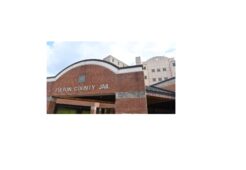How Likely Is An Earthquake In The Midwest, South? The Big One Could Be Coming usatoday.com
A minor earthquake early Wednesday that centered on Decatur in East Tennessee about 60 miles southwest of Knoxville was felt into Georgia, Kentucky, North Carolina and South Carolina.
“A 4.4 magnitude earthquake is a reminder for people to be prepared,” said John Bobel, a public information officer for the division of emergency management in Kentucky’s Lexington-Fayette Urban County Government. People see indoor objects shake with magnitude 4 to 4.9 quakes, but the quakes generally cause little to minimal damage.
Scientists have seen evidence that the central Mississippi River Valley has seen major earthquakes for more than 4,000 years.
On Dec. 16, 1811, the first of three major earthquakes and numerous aftershocks struck what is now known as the New Madrid Seismic Zone, a series of faults that stretch 150 miles from Cairo, Illinois, to Marked Tree, Arkansas.
► Dec. 12: Magnitude 4.4 earthquake shakes Tennessee, Georgia
► Dec. 6: How did Alaska repair earthquake-damaged roads in just days?
► Dec. 2: Alaska earthquake: When will the aftershocks stop?
Today the zone threatens Alabama, Arkansas, Illinois, Indiana, Kentucky, Mississippi, Missouri and Tennessee. That’s a different set of faults than Wednesday’s quake in the East Tennessee Seismic Zone.
Back in 1811, New Madrid, Missouri, itself had only 400 people, St. Louis to the north had about 1,500 residents and Memphis to the south wasn’t even a twinkle in its founders’ eyes, according to the Central United States Earthquake Consortium. Damage was reported as far away as Charleston, South Carolina, and the District of Columbia; and the quakes, estimated at 7.5 to 7.7 magnitude, were felt more than 1,000 miles away in Connecticut.
Today, an estimated 11 million people live in the New Madrid Seismic Zone, according to TransRe, a reinsurance company that essentially insures the property insurance companies.
“The big thing we prepare for is with New Madrid,” Bobel said. “Depending on the significance of an earthquake, Memphis, Tennessee, would be gone; St. Louis would be wrecked.”
Keep in mind, the New Madrid quakes of 1811 and 1812 were almost 2,000 times bigger than Wednesday’s 4.4 trembler and released almost 90,000 times more energy, according to the U.S. Geological Survey’s earthquake calculator. The Feb. 7, 1812, quake formed 20-square-mile Reelfoot Lake, now a state park in West Tennessee.
That’s not as strong as the largest magnitude earthquake in U.S. history, the 9.2-magnitude Alaska earthquake of March 27, 1964. But the New Madrid quakes affected an area two to three times larger and 10 times larger than the April 18, 1906, San Francisco earthquake, which is now estimated as a 7.9 magnitude.
The New Madrid quakes affected a larger area because of the sedimentary rock in the Mississippi Valley, rock such as limestone, sandstone and shale that is made of compressed sediment. The granite of the West is better able to contain the shaking, according to Pennsylvania State University’s Earthquake Seismology Group.
So, what could a big quake look like in the fault zone today? Well, Bobel didn’t sugarcoat it. It would be bad.
“Anything west of I-65, infrastructure would be severely damaged,” Bobel said of the interstate that bisects Kentucky and Tennessee. “The ground could even liquify and turn to mud,” which happened in 1811 and 1812.
Earthquake Center at the University of Illinois estimated in 2008 that Tennessee would have the worst damage: 250,000 buildings moderately or severely damaged, more than 260,000 people displaced, significantly more than 60,000 injuries and fatalities, total direct economic losses surpassing $56 billion, $64 billion today when adjusted for inflation. Kentucky would have the next most significant damage, totaling $45 billion, $52 billion today.
Depending on the epicenter of such a quake, “areas within the NMSZ would experience widespread and catastrophic physical damage, negative social impacts, and economic losses,” the Federal Emergency Management Agency said in 2008. The agency remains concerned that adoption and enforcement of codes that would allow buildings to withstand a strong earthquake are spotty at best and little retrofitting has occurred.
Seismologists estimate that the New Madrid Seismic Zone has a 25 percent to 40 percent chance of producing a significant quake within the next 50 years, according to Lexington-Fayette Urban County Government. USGS studies have concluded that the zone has generated magnitude 7 to 8 earthquakes about every 500 years for the past 1,200 years.






Leave Your Comment